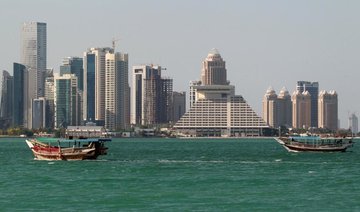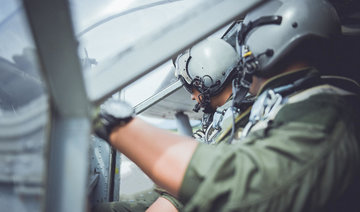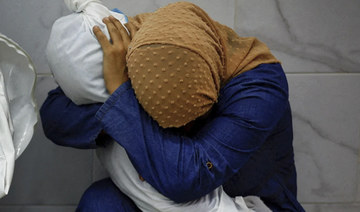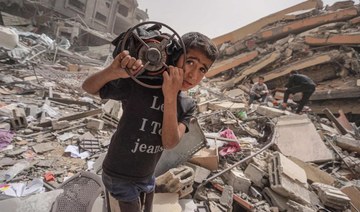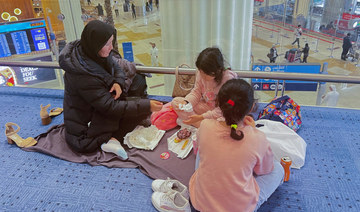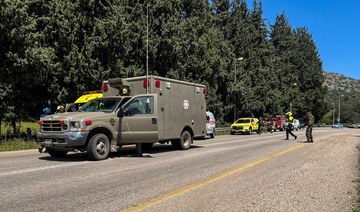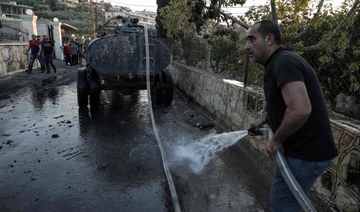WASHINGTON: The United States and Qatar on Tuesday inked a deal to resolve a years-old quarrel over alleged airline subsidies, as Qatar’s government works to defuse tensions with the Trump administration.
A formal announcement came Tuesday, as Secretary of State Rex Tillerson and Defense Secretary Jim Mattis hosted the inaugural round of the US-Qatar strategic dialogue. Agreements, on security and counter-terrorism cooperation and combatting human trafficking, were also signed.
“Qatar is a strong partner and long-time friend of the United States,” Tillerson said, welcoming the agreements. Tuesday’s meeting follows harsh criticism of Qatar from President Donald Trump. He denounced the country last year for allegedly funding terrorism amid a row between the country and other members of the Gulf Cooperation Council, who have imposed a land, sea and air blockade on it.
Qatar hopes to change that narrative by enhancing counterterrorism cooperation and allowing greater US visibility into its finances and banking practices.
Tillerson and Mattis said the US remains deeply concerned about the situation as it nears its eight-month mark, including hostile “rhetoric and propaganda” being employed. They called on all parties to the dispute to renew efforts to end it.
Qatar is home to a major US military base that is key to the fight against Daesh in Iraq and Syria and Mattis said that “a united GCC bolsters our effectiveness on many fronts.”
The aviation agreement will see state-owned Qatar Airways agree voluntarily to open up its accounting books. US airlines say the company receives billions of dollars in government payments that leave them at a competitive disadvantage. Qatar also made a loose commitment that the flag carrier won’t launch flights to the United States from Europe or other non-Qatari cities, creating yet more competition for the US airlines.
Both sides of the dispute can claim the agreement as a victory — for very different reasons.
The US airline industry can claim the increased transparency will create a powerful disincentive to unfair subsidies, as Qatar will no longer be able to mask such payments through creative accounting. The three major US carriers — Delta Air Lines, American Airlines and United Airlines — have spent huge sums over the last three years pressing the Obama administration and Trump administration for tough action. They’re eager to show a win.
Yet for Qatar, the agreement averts the more serious step US airlines wanted: re-opening the so-called open-skies treaties that could lead to less favorable conditions for Arabian Gulf airlines. And, it means that Qatar can also show it’s cooperating closely and productively with US regulators.
That could help the tiny gas-rich kingdom draw a contrast with the United Arab Emirates, whose two airlines are also accused of improper subsidies but have yet to reach an agreement with Washington.
“Everybody gets to claim victory in this,” said Helane Becker, an airline analyst for Cowen and Co.
Indeed, even before the announcement, American, the world’s biggest airline by passenger traffic, praised the deal as a way to “thoughtfully address” Qatari subsidies. And United CEO Oscar Munoz applauded the agreement while thanking Trump’s administration for “effectively representing the interests of the American aviation industry.”
In an eight-paragraph document laying out “understandings” between Qatar and the US, the Gulf nation commited within one year to releasing audited financial statements for Qatar Airlines “in accordance with internationally-recognized accounting standards.” Within two years, Qatar Airways is to disclose any transactions with other state-owned entities, such as caterers or other companies that support airline operations.
A side-letter to the agreement stated that Qatar’s civilian aviation authority is unaware of any plans by Qatar Airlines to start so-called “Fifth Freedoms” flights — routes from third countries to the United States. Under the scenario US airlines fear, Qatar Airways could offer flights from its Doha hub to, say, Paris or London, stop to pick up more passengers, then fly on to New York.
The side-letter only says there are no current plans to operate such service. That’s short of a binding guarantee. There’s also no commitment Qatar Airways won’t expand its offering of Qatar-US flights.
“This appears to be the administration essentially throwing a meatless bone to the three US carriers to put an end to their rants against the Gulf carriers,” said John Byerly, who was the chief open skies negotiator in the Obama administration and has also consulted for Emirates Airline and UPS.
The two UAE airlines — Dubai-based Emirates and Abu Dhabi-based Etihad Airways — aren’t a party to the US-Qatar agreement. Emirates Airline currently offers “Fifth Freedom” flights in which passengers can fly from New York-area airports to Milan, Italy or Athens without ever setting foot in the UAE.
All three Gulf airlines have long denied receiving unfair government subsidies. There was no immediate reaction from either Emirates or Etihad.
US, Qatar reach agreement on subsidy spat with airlines
US, Qatar reach agreement on subsidy spat with airlines

Hamas slams US veto of Palestinian UN membership bid
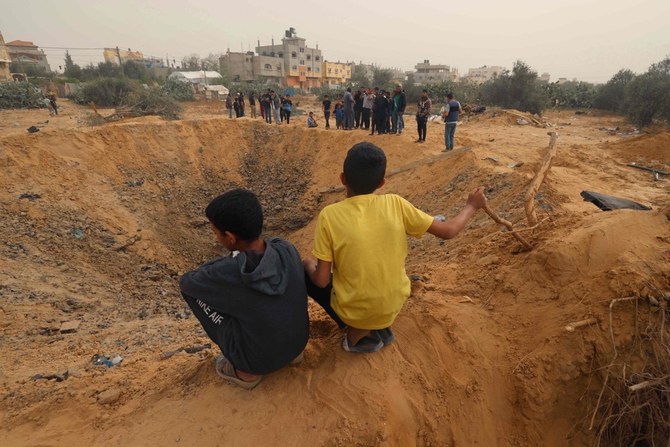
PALESTINIAN TERRITORIES: Palestinian militant group Hamas condemned on Friday the US veto that ended a long-shot Palestinian bid for full United Nations membership.
“Hamas condemns the American veto at the Security Council of the draft resolution granting Palestine full membership in the United Nations,” the Gaza Strip rulers said in a statement, which comes amid growing international concern over the toll inflicted by the war in the besieged Palestinian territory.
The veto by Israel’s main ally and military backer had been expected ahead of the vote, which took place more than six months into Israel’s offensive in Gaza, in retaliation for the deadly October 7 attack by Hamas militants.
Twelve countries voted in favor of the draft resolution, which was introduced by Algeria and “recommends to the General Assembly that the State of Palestine be admitted to membership of the United Nations.” Britain and Switzerland abstained.
Gazans search for remains after deadly Rafah strike
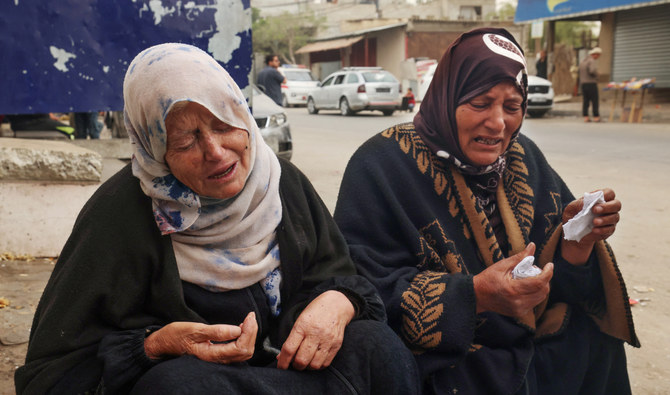
An Israeli strike hit the home where a displaced Palestinian family was sheltering in the southern city of Rafah, relatives and neighbors told AFP as they scraped at the soil with their hands.
Al-Arja said the blast killed at least 10 people.
“We retrieved the remains of children and women, finding arms and feet. They were all torn to pieces.
“This is horrifying. It’s not normal,” he said, hauling concrete and broken olive branches from the wreckage. “The entire world is complicit.”
Soon after the war began on Oct. 7, Israel told Palestinians living in the north of Gaza to move to “safe zones” in the territory’s south, like Rafah.
But Israeli Prime Minister Benjamin Netanyahu has since vowed to invade the city, where around 1.5 million people live in shelters, more than half the territory’s population.
“How is Rafah a safe place?” said Zeyad Ayyad, a relative of the victims. He sighed as he cradled a fragment of the remains.
“I heard the bombing last night and then went back to sleep. I did not think it hit my aunt’s house.”
The search for remains was long and painful. The strike left a huge crater and children picked through the rubble while neighbors removed debris, tarpaulin, a pink top.
“We can see them under the rubble and we’re unable to retrieve them,” Al-Arja said.
“These are people who came from the north because it was said the south is safe.”
“They struck without any warning,” he said.
In a separate strike on the house in Rafah’s Al-Salam neighborhood overnight on Tuesday, rescue crews recovered the corpses of eight family members, including five children and two women, Gaza’s civil defense service said.
“An Israeli rocket hit a house of displaced people,” said resident Sami Nyrab.
“My sister’s son-in-law, her daughter, and her children were having dinner when an Israeli missile demolished their house over their heads.”
Dubai clears up after epic rains swamp glitzy city
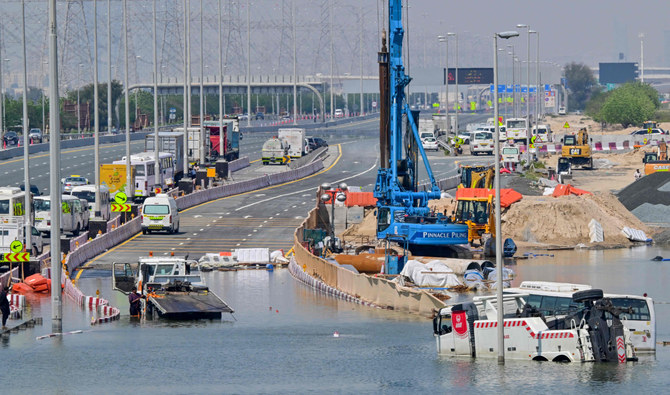
- The rains were the heaviest experienced by the UAE in the 75 years that records have been kept
DUBAI: Dubai was busy on Thursday clearing its waterlogged roads and drying out flooded homes two days after a record storm deposited a year’s worth of rainfall in a day.
Dubai International Airport, a major travel hub, struggled to clear a backlog of flights, and many roads were still flooded in the aftermath of Tuesday’s deluge.
The rains were the heaviest experienced by the UAE in the 75 years that records have been kept.
They brought much of the country to a standstill and caused significant damage.
Flooding trapped residents in traffic, offices, and homes.
Many reported leaks at their homes, while footage circulated on social media showed malls overrun with water pouring from roofs.
Traffic remained heavily disrupted.
A highway through Dubai was reduced to a single lane in one direction, while the main road connecting Dubai with Abu Dhabi was closed in the Abu Dhabi direction.
“This was like nothing else. It was like an alien invasion,” said Jonathan Richards, a Dubai resident from Britain.
“I woke up the other morning to people in kayaks, pet dogs, pet cats, and suitcases outside my house.”
Another resident, Rinku Makhecha, said the rain swamped her newly renovated house, which she moved into two weeks ago.
“My entire living room is just like ... all my furniture is floating right now,” she said.
In Dubai’s streets, some vehicles, including buses, could be seen almost entirely submerged in water.
Long queues formed at petrol stations.
Dubai Airport had not resumed normal operation after the storm flooded taxiways, forcing flight diversions, delays, and cancellations.
Dubai Airport Chief Operating Officer Majed Al Joker told Al Arabiya TV he expected Dubai International Airport to reach 60 to 70 percent capacity by the end of Thursday and full operational capacity within 24 hours.
The airport struggled to get food to stranded passengers, with nearby roads flooded and overcrowding limited access to those who had confirmed bookings.
While some roadways into hard-hit communities remain flooded, delivery services across Dubai, whose residents are used to ordering everything at the click of a mouse, slowly began returning to the streets.
Following Tuesday’s events, questions were raised about whether cloud seeding, a process that the UAE frequently conducts, could have caused the heavy rains.
A UAE government agency overseeing cloud seeding — manipulating clouds to increase rainfall — denied conducting such operations before the storm.
President Sheikh Mohammed bin Zayed Al-Nahyan said in a statement that he had ordered authorities to assess the damage and support families impacted by the storm.
Dubai’s Crown Prince Sheikh Hamdan bin Rashid Al-Maktoum said on X that the safety of citizens, residents, and visitors was the utmost priority.
“At a meeting with government officials in Dubai, we set directives to prepare comprehensive plans in response to natural crises such as the unexpected current weather conditions,” he said.
Hezbollah says 2 fighters killed in Israeli strikes
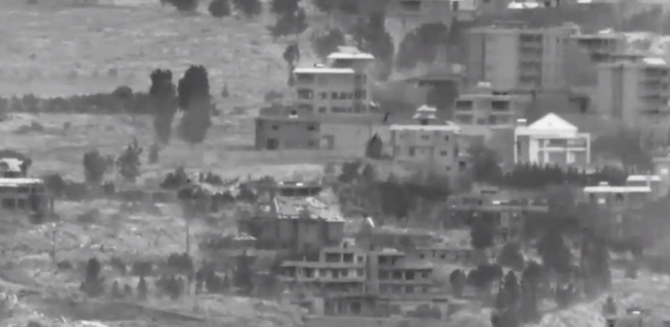
- GPS interference affecting both sides of Lebanese border, source says
BEIRUT: Two Hezbollah fighters were killed on Wednesday as Israel intensified strikes on south Lebanon following an attack by the Iran-backed group that wounded 14 Israeli soldiers.
Israel and Hezbollah have exchanged near-daily cross-border fire since Palestinian militant group Hamas attacked southern Israel on Oct. 7, triggering war in the Gaza Strip.
A security source said: “Hezbollah’s complex attack against the Israeli army in Wadi Al-Aramshe early on Wednesday, which led to the injury of 14 Israeli soldiers, including six with serious injuries, was absorbed by the Israeli side after the painful blow it directed at the party by assassinating three of its field officials.”
The Israeli army responded to the Wadi Al-Aramshe operation on Wednesday night by targeting the town of Iaat in the Bekaa Valley, 5 km from Baalbek. A drone strike hit a warehouse belonging to a member of the Al-Zein family, resulting in light wounds to one civilian.
Israel continues to jam GPS around the Lebanese southern border region, especially during military operations.
A security source said: “This interference negatively affects both the Israeli army and Hezbollah in targeting objectives.”
Hezbollah announced a series of operations since dawn on Thursday, targeting Israeli military sites opposite the Lebanese border.
The group targeted an Israeli force attempting to withdraw a military vehicle that was targeted on Wednesday at Metula, opposite the Lebanese town of Kfarkela.
At dawn, Israeli soldiers in Al-Malikiyah, opposite the Lebanese town of Aitaroun, were targeted by Hezbollah using missiles.
The group also targeted Israeli soldiers in Al-Marj.
“After careful monitoring and anticipation of the enemy’s movement at Al-Marj … they were targeted with missile weapons and suffered a direct hit; some died while others were injured,” the group said in a statement.
Hezbollah attacked Israeli soldiers using missiles in the Hanita forest, opposite the Lebanese town of Alma Al-Shaab.
On Thursday, the party mourned two members killed in Wednesday night’s shelling of Kfarkela. Mohammed Jamil Al-Shami from Kfarkela and Ali Ahmed Hamadeh from Doueir were killed in the Israeli operation.
The Israeli army targeted Lebanese towns with heavy shelling until dawn on Thursday. The town of Khiam was a priority target; correspondents in the area counted seven strikes and 128 artillery and phosphorous shells impacting between 8 p.m. and 4 a.m.
A young man from Habboush, Ahmed Hassan Al-Ahmed, was killed in the shelling and mourned by residents of his town.
Jets struck Hezbollah targets in Khiam, including infrastructure and two military buildings, the Israeli army said.
Israeli drones targeted a house on the outskirts of Markaba and in Blida on Thursday, with casualties reported.
The Israeli army also targeted Kfarkela with two missiles from a drone, and with artillery and phosphorous shells. From Metula opposite the border, Israeli soldiers combed the town with heavy machine guns.
The outskirts of Dhayra, Al-Bustan and Aita Al-Shaab were hit by gunfire from the Israeli position in Birkat Risha and other positions adjacent to the Blue Line.
German airline Lufthansa announced on Thursday it had extended the suspension of flights to Beirut and Tehran until April 30.
The decision was taken on the night of the Iranian attack on Israel last weekend.
UNIFIL spokesman Andrea Tenenti said that the organization’s peacekeepers “remain in their positions and carry out their duties, as well as our civilian staff.”
He added: “The safety and security of UN staff and their families are our priority.”
Dubai clears up after epic rains swamp glitzy desert city
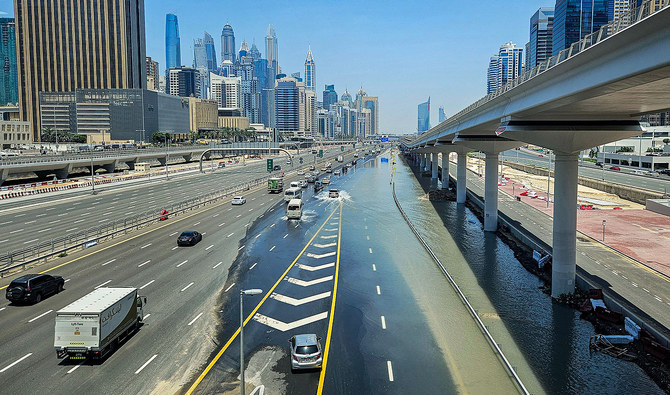
- Rains were the heaviest experienced by the United Arab Emirates in the 75 years that records have been kept
- Flooding trapped residents in traffic, offices and homes, houses’ roofs leaked and malls were overrun with water
DUBAI: Dubai, a city in the desert proud of its futuristic gloss, was on Thursday busy clearing its waterclogged roads and drying out flooded homes two days after a record storm saw a year’s rain fall in a day.
Dubai International Airport, a major travel hub, struggled to clear a backlog of flights and many roads were still flooded in the aftermath of Tuesday’s deluge.
The rains were the heaviest experienced by the United Arab Emirates in the 75 years that records have been kept. They brought much of the country to a standstill and caused significant damage.
Flooding trapped residents in traffic, offices and homes. Many reported leaks at their homes, while footage circulated on social media showed malls overrun with water pouring from roofs.
Traffic remained heavily disrupted. A highway through Dubai was reduced to a single lane in one direction, while the main road that connects Dubai with the capital Abu Dhabi was closed in the Abu Dhabi direction.
“This was like nothing else. It was like an alien invasion,” Jonathan Richards, a Dubai resident from Britain told Reuters.
“I woke up the other morning to people in kayaks with pet dogs, pet cats, suitcases all outside my house.”
Another resident, Rinku Makhecha, said the rain swamped her freshly renovated house she moved into two weeks ago.
“My entire living room is just like ... all my furniture is floating right now,” she said.
In Dubai’s streets, some vehicles, including buses, could be seen almost entirely submerged in water. Long queues formed at petrol stations.
Dubai airport had yet to resume normal operation after the storm flooded taxiways, forcing flight diversions, delays and cancelations.
Dubai Airports Chief Operating Officer Majed Al Joker told Al Arabiya TV he expected Dubai International Airport to reach 60-70 percent capacity by the end of Thursday and full operational capacity within 24 hours.
The airport struggled to get food to stranded passengers with nearby roads flooded and overcrowding limited access to those who had confirmed bookings.
RETURNING SUPPLIES
The storm, which hit neighboring Oman on Sunday, pounded the UAE on Tuesday, with 20 reported dead in Oman and one in the UAE.
While some roadways into hard-hit communities remain flooded, delivery services across Dubai, whose residents are used to ordering everything at the click of a mouse, slowly began returning to the streets.
Rains are rare in the UAE and elsewhere on the Arabian Peninsula, which is typically known for its dry desert climate. Summer air temperatures can soar above 50 degrees Celsius.
Following Tuesday’s events, questions were raised whether cloud seeding, a process that the UAE frequently conducts, could have caused the heavy rains.
But climate experts blame global warming for such extreme weather events.
Researchers anticipate that climate change will lead to heightened temperatures, increased humidity and a greater risk of flooding in parts of the Gulf region. Countries like the UAE where there is a lack of drainage infrastructure to cope with heavy rains can suffer the most.
A UAE government agency that oversees cloud seeding — a process of manipulating clouds to increase rainfall — denied conducting any such operations before the storm.
President Sheikh Mohammed bin Zayed Al Nahyan said in a statement he had ordered authorities to assess the damage and provide support to families impacted by the storm.
Dubai’s Crown Prince Sheikh Hamdan bin Rashid Al Maktoum said on X that the safety of citizens, residents and visitors was the utmost priority.
“At a meeting with government officials in Dubai, we set directives to prepare comprehensive plans in response to natural crises’ such as the unexpected current weather conditions,” he said.



